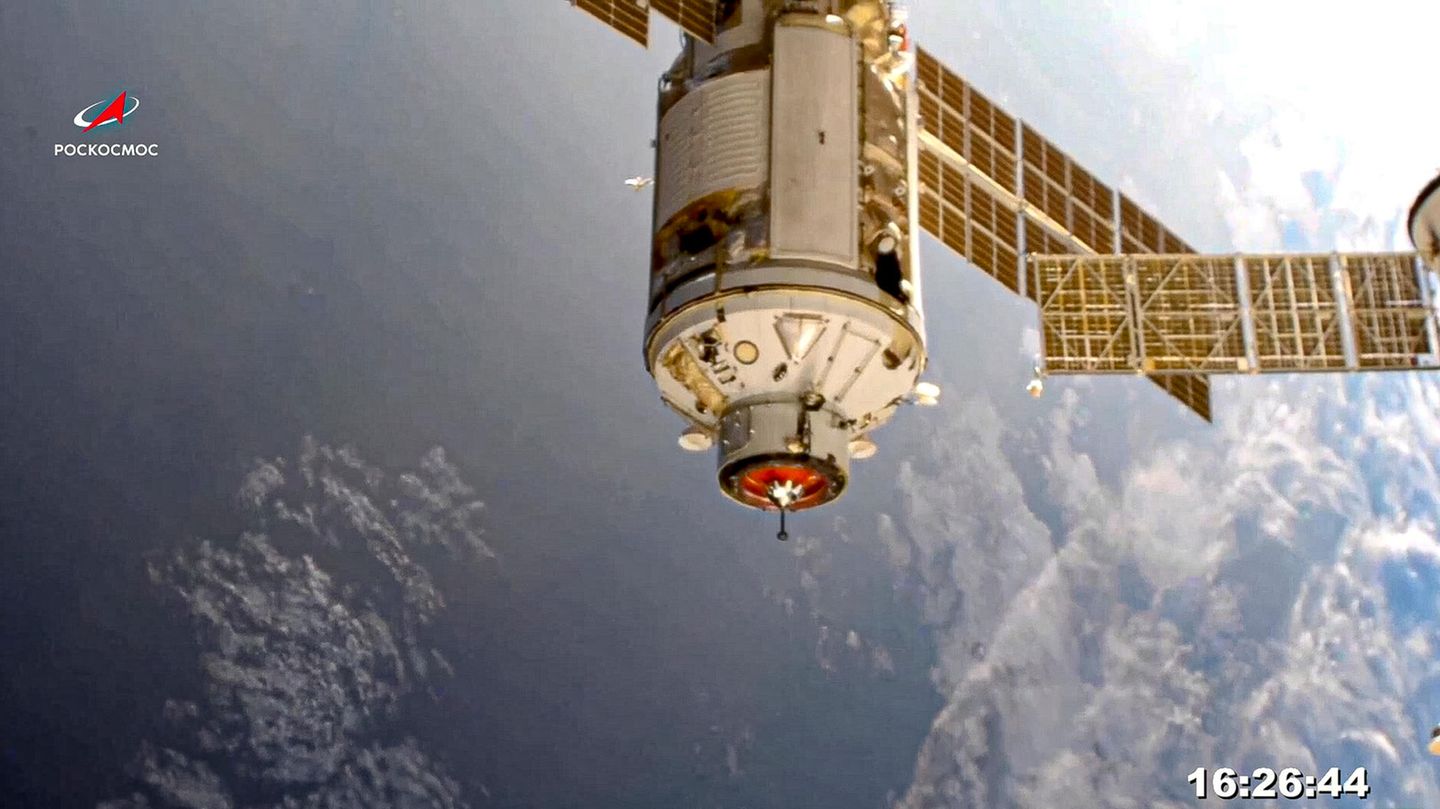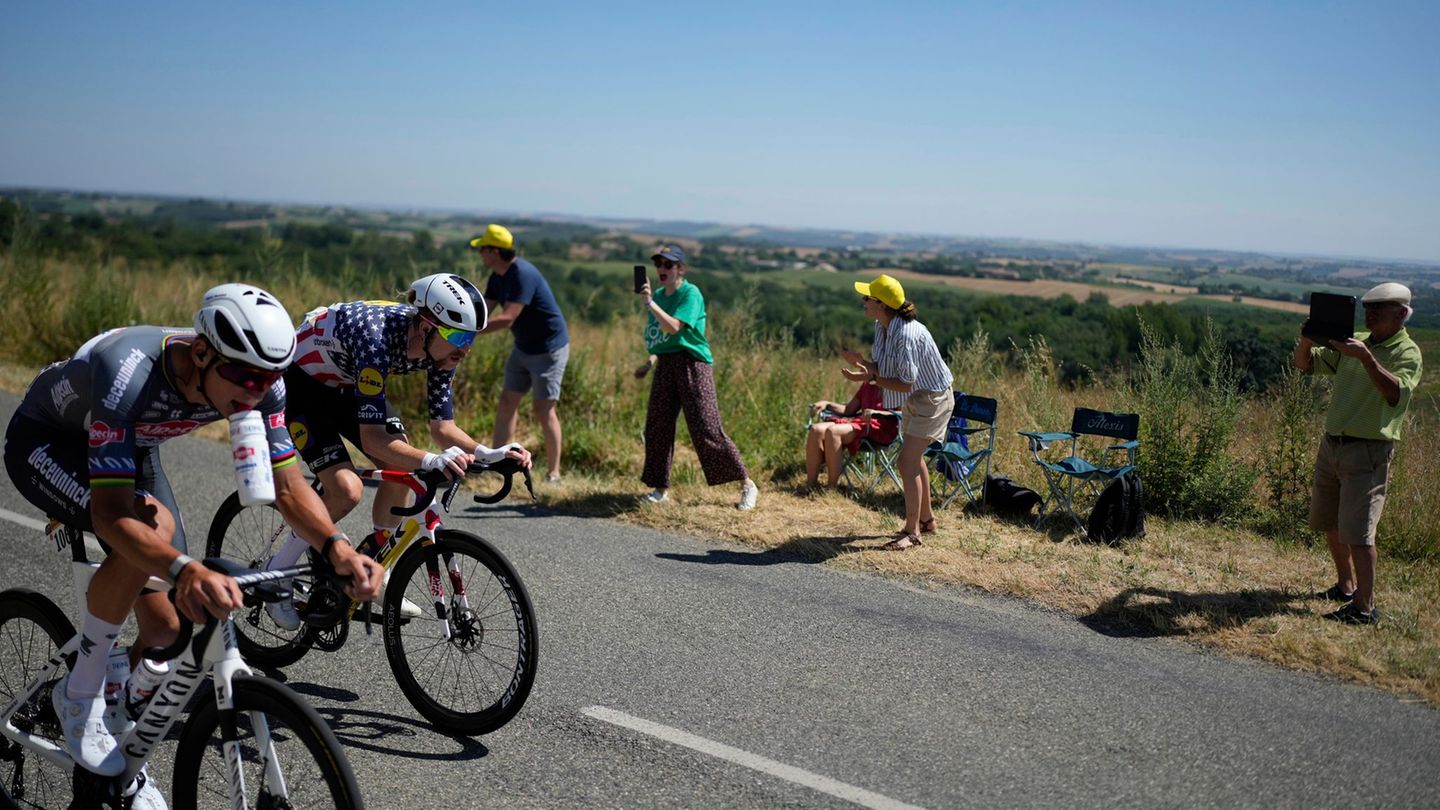On Earth, Americans and Russians are not really green at the moment. In space, however, the nations work together – and now had to join forces to solve a problem on the ISS.
The fact that the International Space Station (ISS) is thrown out of its orbit high up in space is an unusual incident. This is exactly what happened during a docking maneuver. Fortunately, the astronauts were able to solve the problem fairly quickly.
Russia’s new laboratory module “Nauka” provided the shock moment. The module had already reached the space station on Thursday as planned after its eight-day journey, then the situation got out of control for a short time.
After the module “Nauka” had already docked, it happened
Because after the module had initially docked on the ISS as planned, its engines ignited unplanned and turned the entire space station, as NASA announced on Twitter. The drive ignited “unintentionally and unexpectedly” a few hours after docking and changed the attitude of the ISS by 45 degrees, according to the US space agency.
The ISS is the outpost of mankind in space and flies at an altitude of 400 kilometers in a certain orbit around the earth. The arrival of the module had previously been shown in a live broadcast by the Russian space agency Roskosmos. “There is contact !!!”, Roskosmos boss Dmitri Rogozin cheered on Twitter. However, problems had already arisen during the trip to the ISS. “We won’t lie. We had to worry for the first three days,” Rogozin told the RIA Novosti news agency. And the problems should then continue after arriving at the ISS.
The ISS, which was pushed out of its orbit, was brought back into its regular trajectory through an emergency operation, according to NASA. The crew of the space station ignited the engines of the Russian part of the station in order to counteract. At no time was the crew in danger, and the ISS and all systems on board were functioning normally.
Nasa contact with the ISS was interrupted for a good hour
However, the US space agency claims to have lost control of the station’s position in space for almost an hour. As a result, contact with the crew was also broken for eleven minutes.
It will now take several months and several space walks to fully integrate the module into the space station. “Nauka” was launched last week from the Baikonur spaceport in Kazakhstan with a Russian Proton rocket. The new module is mainly used for research and storage of laboratory equipment. It measures 13 by 4.11 meters, weighs more than 20 tons and is to replace the disused module “Pirs” (landing stage) on the Russian part of the station, which was recently undocked and sunk in the Pacific.
Actually, “Nauka” was supposed to be launched in 2007. Problems had always led to delays. The last module was sent to the Outpost of Humanity by Russia eleven years ago.
As a multi-purpose module, “Nauka” is primarily intended for research. But it will also make people’s lives on board the ISS a little more comfortable. For the Russian part of the space station, “Nauka” creates space for water, cargo and oxygen equipment for regeneration. The ERA robot arm from the European Space Agency is also on board and is the first robot arm to reach the Russian part of the ISS.
After the incident, NASA announced that it was postponing the launch of a “Starliner” spaceship planned for Friday from the Boeing company to the ISS for an indefinite period. The aim of the unmanned test flight is to create the basis for the “Starliner” to be able to transport astronauts to the space station in the future.
David William is a talented author who has made a name for himself in the world of writing. He is a professional author who writes on a wide range of topics, from general interest to opinion news. David is currently working as a writer at 24 hours worlds where he brings his unique perspective and in-depth research to his articles, making them both informative and engaging.




